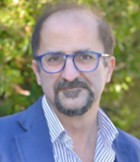Events
If you want to submit a meeting or an event that is relevant to orthodontic teaching please contact the Secretary (see contact details). It is to the discretion of the Council to decide on placement on the NEBEOP website.
- Event: NEBEOP Web Academy webinar- 50
- Topic: Facial growth modification from the stone age to the digital age - “What have we learned?”
- Erasmus course: B2 Facial growth
- Speaker: Prof. Mauro Farella, University of Otago, Dunedin, New Zealand.
- Dates: December 2, 2025; 19:00-20:15hr CET
- Moderator: NEBEOP-50: Dr. Giorgio Iodice, University of Naples Federico II, Italy.
- Mode: Zoom webinar. Registration through your program director
- Abstract
- Facial growth modification has long been one of the most debated topics in orthodontics. Although functional appliances can produce clear clinical improvements in facial profile and convexity, the true magnitude of skeletal change remains uncertain. Current evidence suggests that a substantial proportion of the observed changes may be related to natural growth rather than to the treatment itself. Controlled studies and randomized clinical trials often report modest skeletal effects, frequently smaller than normal biological variability, while methodological issues such as the use of historical controls, limitations of cephalometric superimposition, and the poor reliability of growth timing indicators complicate interpretation of the findings.The digital era, with the introduction of CBCT, three-dimensional models, and colour-coded growth maps, has opened new possibilities for a more detailed assessment of craniofacial remodelling, although challenges in image registration and study design persist. At the same time, genetic research and animal models are beginning to clarify the biological basis of individual differences in treatment response. Overall, the efficacy of facial growth modification cannot yet be considered definitive and remains unpredictable at the individual level. Clinical decision making must therefore combine the best available evidence with professional judgment and patient-specific factors, while emerging technologies and molecular insights gradually refine our understanding.
- Short Speaker Bio
- Mauro Farella is Professor and Chair of Orthodontics at the University of Otago, New Zealand, where he also serves as Director of the Research Programme in Craniofacial Research. He holds a DDS Degree (University of Naples, 1993), a PhD in Oral Sciences (University of Reggio Calabria, 1999), a Specialist Degree in Orthodontics (University of Naples, 2002), a Specialist Degree in Medical Statistics (University of Milan, 2007), and the "Venia Legendi" in Switzerland (University of Zürich, 2009). He has also been awarded Certified Membership of the European Board of Orthodontists (EBO, Helsinki, Finland, 2009) and the Australasian Orthodontic Board (ABO, 2023). His research and clinical expertise encompass orthodontic biomechanics and evidence-based treatment planning, occlusion, bruxism, TMDs, craniofacial growth, research methodology, and patient-centred orthodontics. Professor Farella has published over 200 scientific papers, over 90 percent of which are original research. His studies have been supported by research grants exceeding one million euros. He serves as Associate Editor of the Journal of Orthodontics and Craniofacial Research and the Korean Journal of Orthodontics, and sits on the Editorial Boards of the Journal of Oral Rehabilitation and the European Journal of Oral Sciences. He has lectured in 22 countries and received numerous awards, including the Alan Docking Award (IADR), the Sir John Walsh Award, and the Research Supervisor of the Year (2021). He is Honorary Professor at the University of Nanjing (China) and Adjunct Professor at the University of Cagliari (Italy). Professor Farella is a registered orthodontic specialist in New Zealand and Italy and maintains private practices dedicated exclusively to clinical orthodontics.
- References
- 1: Prasad S, Denotti G, Farella M. Effect of prior knowledge about treatment on cephalometric measurements. J Orthod. 2022 Dec;49(4):388-393.
- 2: Parton AL, Duncan WJ, Oliveira ME, Key O, Farella M. Implant-based three-dimensional superimposition of the growing mandible in a rabbit model. Eur J Orthod. 2016 Oct;38(5):546-52.
- 3: Gray S, Bennani H, Kieser JA, Farella M. Morphometric analysis of cervical vertebrae in relation to mandibular growth. Am J Orthod Dentofacial Orthop. 2016 Jan;149(1):92-8.
- 4: Antoun JS, Cameron C, Sew Hoy W, Herbison P, Farella M. Evidence of secular trends in a collection of historical craniofacial growth studies. Eur J Orthod. 2015 Feb;37(1):60-6.
-
- 5: Martina R, Cioffi I, Galeotti A, Tagliaferri R, Cimino R, Michelotti A, Valletta R, Farella M, Paduano S. Efficacy of the Sander bite-jumping appliance in growing patients with mandibular retrusion: a randomized controlled trial. Orthod Craniofac Res. 2013 May;16(2):116-26.

|
|
